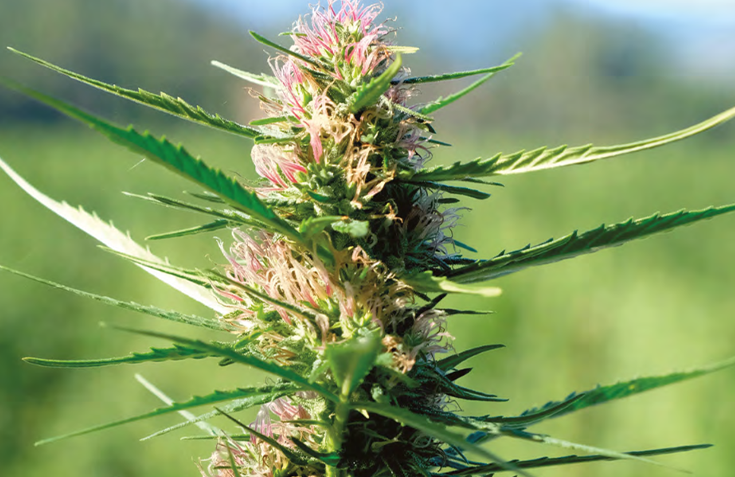The Dawn of Cannabis Domestication

We know that one of the earliest shreds of evidence for cannabis smoking discovered in ancient tombs were identified in China.
In 2019, an international team of researchers found braziers with traces of cannabis in a 2500-year-old cemetery in Central Asia. However, little was known about when humans began to domesticate cannabis. But a new research article published in Science Advances1in July 2021 found out that cannabis was first domesticated in early Neolithic times in East Asia.
The study reveals that cannabis was one of the first domesticated plants on earth. Initially, the cannabis plant was used for rituals and industrial and agricultural purposes. But its exploitation brutally declined in the 20th century, while its use for recreational purposes broadened worldwide.
Humans understudied its genomic history of domestication, despite having used cannabis for millennia. The main reason for this lack of data is to be ascribed to legal restrictions on cannabis, according to researchers. Researchers provided a unique global view of the domestication of cannabis.
The study suggests that the origin of cultivation for the plant has spread worldwide. Their findings coincide with continuous artificial selection and extensive hybridization between locally adapted, traditional landraces (strains of cannabis that developed naturally in the environment over centuries) and modern commercial cultivars. The group team involved in the study collected 82 cannabis samples (seeds or leaves) from around the world. The samples included strains selected for fiber production and others from Europe and North America bred to produce recreational cannabis with high THC levels.
By extracting genomic DNA from the samples, sequencing them in a lab in Switzerland, and re-analyzing sequencing data from 28 other samples, researchers showed that the wild varieties were in fact strains “escaped” from domesticated forms and readapted to a wild environment.The study also suggests that the cannabis species has a single domestication origin, most likely in a wide region ranging from West Asia through Central Asia to North China.
Such new findings contrast with a widely accepted view, which associates cannabis with Central Asia as a centre of crop domestication. The theory of a Central Asian origin was mostly based on observational data of wild samples in that region. But genome-wide analyses confirmed that cannabis had already been domesticated by early Neolithic times, around 12.000 years ago.
Researchers wrote that their conclusion was supported by pottery and other archaeological evidence from the same period discovered in present-day China, Japan, and Taiwan. “This coincides with the dating of cord-impressed pottery from South China and Taiwan (12,000 years ago) as well as pottery-associated seeds from Japan (10,000 years ago). Archaeological sites with hemp-type Cannabis artifacts are consistently found from 7500 years ago in China and Japan, and pollen consistent with cultivated Cannabis was found in China more than 5000 years ago,” they wrote in the study.
Based on both demographic and phylogenetic analyses, researchers propose that early domesticated cannabis was first used as a primarily multipurpose crop until around 4000 years ago, before undergoing strong divergent selection for increased fiber or drug production. Researchers also suggest that pure wild progenitors of the cannabis plants have gone extinct.
The current Chinese landraces and wild-growing plants represent the closest descendants of the ancestral gene pool from which hemp and marijuana landraces have since derived. Cannabis has travelled the world for centuries. Only a few domesticated cannabis strains expanded to later-form hemp (with a low THC level) and marijuana (with a high THC level) around 4000 years ago.
Multiple fiber artifacts appeared in East Asia, and fiber-grown cannabis spread westward into Europe and the Middle East, as revealed by Bronze Age archaeological discoveries. Ritualistic and inebriant use of cannabis has been documented in Western China from archaeological remains at least 2500 years ago.
"The first archaeobotanical record of cannabis in the Indian subcontinent dates back to around 3000 years ago,” researchers wrote. In contrast with East Asia, historical manuscripts from India from 2000 years ago indicate that the species was only used for recreational use. “Over the next centuries, drug-type Cannabis travelled to various world regions, including Africa (13th century) and Latin America (16th century), progressively reaching North America at the beginning of the 20th century and later, in the 1970s, from the Indian subcontinent. Meanwhile, hemp-type cultivars were first brought to the New World by early European colonists during the 17th century and later replaced,” researchers wrote. East Asia was already known as a fundamental ancient hot spot of domestication for several crop species, including rice, soybean, apricot, and peach.
But now, also cannabis has joined the list. The Neolithic Era began when some groups of humans gave up the nomadic and begin farming. The Neolithic Revolution, also known as Agricultural Revolution is thought to have begun about 12,000 years ago. It coincided with the end of the last ice age. The Agricultural Revolution changed humans’ behavior and paved the way for modern civilization. In addition, researchers have provided support for an evolutionary scenario that explains the variability of cannabis plants as the result of artificial selection by early farmers.
Written and Published by Dario Sabaghi in Weed World Magazine issue 154












Validate your login